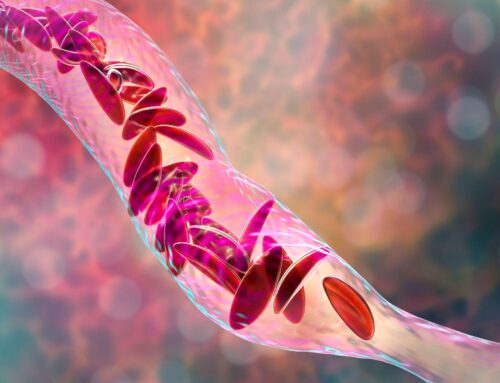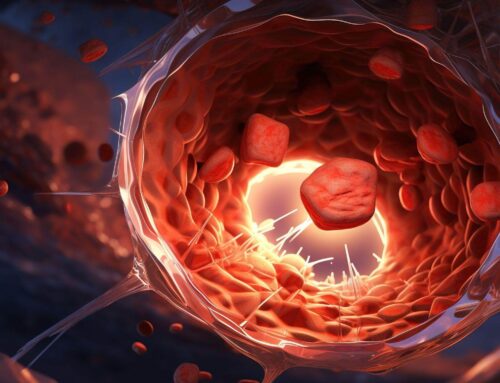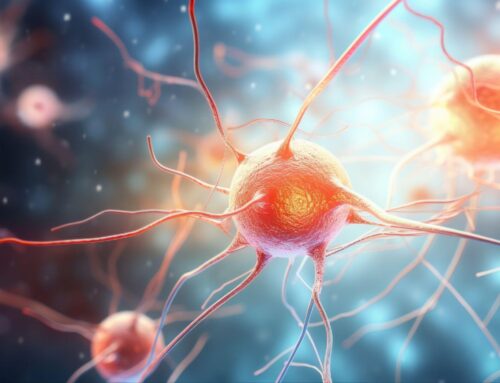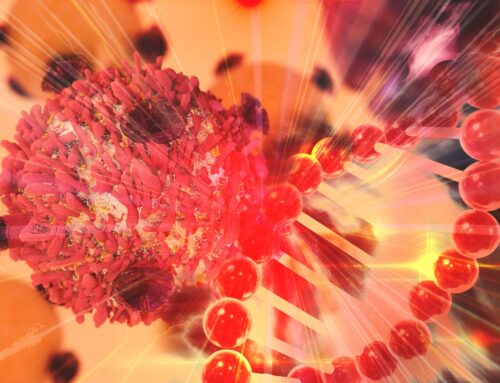Looking for something?
Investigating the Biology and Potential of CircRNA
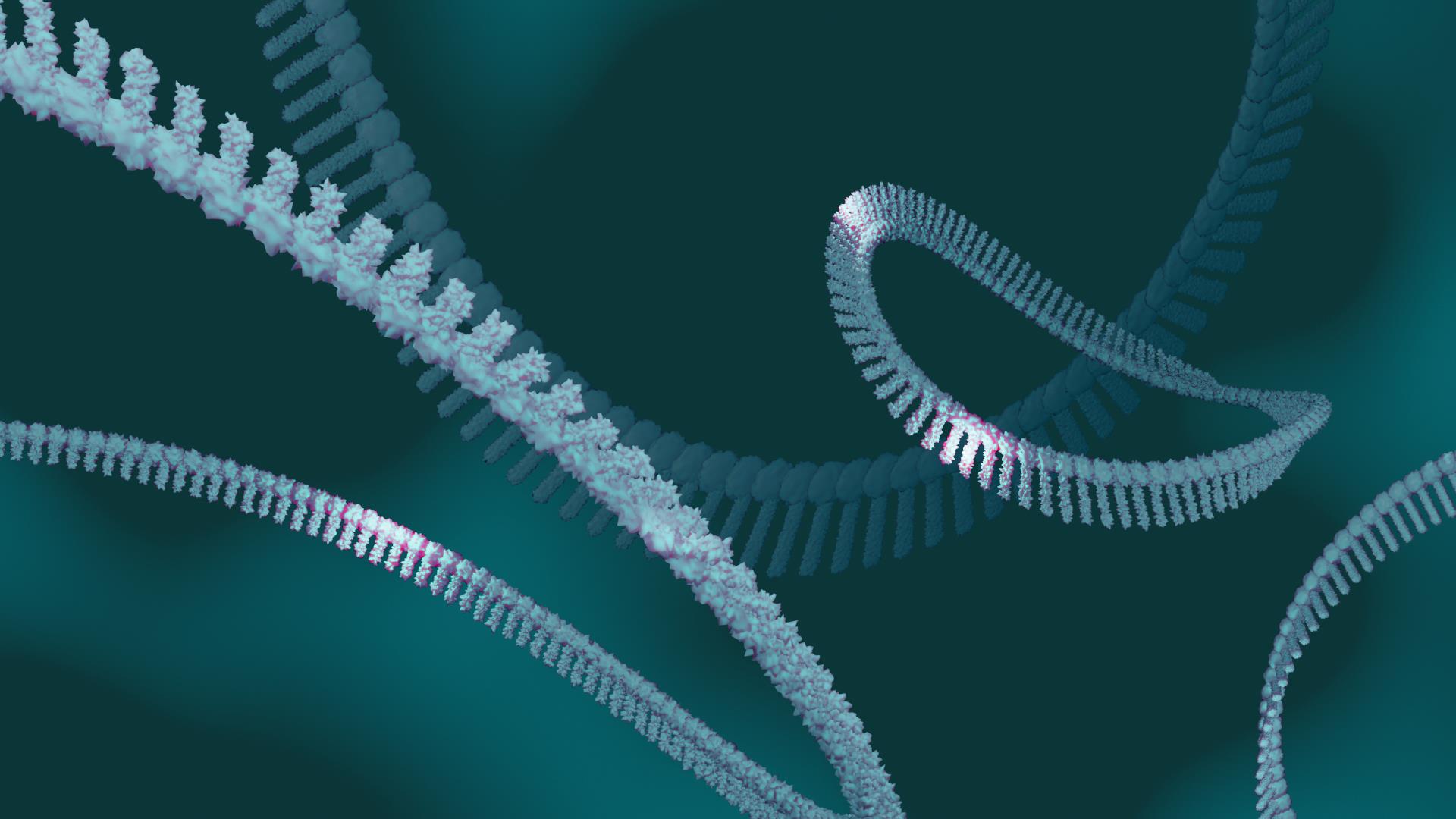
In the past few years, mRNA has become a mainstream word with the swift creation of mRNA vaccines to treat SARS-CoV-2. This new technology was already in development, placing it in the perfect position to meet an urgent global need. Yet, there are still challenges to be met to further improve mRNA vaccines and other mRNA therapeutics. Another RNA – circRNA – has garnered a lot of interest due to its potential not only as a vaccine for infectious diseases, but also for regenerative medicine and in treating genetic diseases, autoimmune diseases, and cancer, as well as providing cancer vaccines. Research teams and biopharmaceutical companies around the world have focused considerable efforts on better understanding these unique and abundant types of RNA.
Abundant circRNAs Perform Many Biological Functions
Circular RNA (circRNA) are prevalent in eukaryotic cells where they naturally occur (1). Thousands are expressed from human genomes (2), and they are highly abundant in the heart, brain, and liver (3). CircRNA is most often produced through back-splicing during RNA splicing, in which a 5’ splice donor site in a downstream exon is fused to an upstream exon’s 3’ splice acceptor site (2).
CircRNAs are comprised of single-stranded RNA molecules that are covalently linked head to tail (1), forming a circle that allows greater stability than their linear counterpart. High stability is a key advantage of circRNA, as it allows for a prolonged therapeutic effect. Since they lack a free end, circRNA can escape the RNA-mediated immune response and are resistant to exonuclease degradation because they lack a 5’-cap and 3’-poly(A) tail (3). However, they can still be degraded by other means such as endonucleases (4).
CircRNA is translated differently than linear mRNA since they are covalently linked head to tail and do not have a 5’ terminus. So, they must rely on other mechanisms to initiate translation, such as internal ribosome entry sites (IRES). Many research teams have endeavored to optimize circRNA and improve protein yields. In one recent example, Chen et al. worked to improve translation of circRNA, and after a series of optimizations that included upstream IRES topology, 5′ PABP spacer, HBA1 3′ UTR and HRV-B3 IRES with proximal loop Apt-eIF4G insertion, they were able to improve circRNA protein yields by several hundred-fold. The team tested the optimized circRNA in mice and found that expression in engineered circRNAs is similar to or greater than that of modified mRNAs, but the duration of expression was much longer in circRNA (1).
Once thought to be artifacts of aberrant RNA splicing (5), research indicates that circRNAs may perform specific, biologically meaningful functions (2). They are often tissue, cell type, and developmental stage-specific (3). There are many potential functions of circRNA, such as protein coding and translation (4), regulating gene transcription (4), and acting as miRNA sponges (5). It is interesting to note that the functions of a circRNA are independent of the parental mRNA.
There are challenges, such as the possibility of producing mis-splicing byproducts that could include cognate linear RNAs, or that using RNAi approaches to knock down circRNAs could affect linear cognates or other genes (3). Some circularization methods leave behind fragments of cyanobacterial ribozyme mRNA which, although short and non-coding, could be immunogenic, and it is possible that the circRNA itself could prove to trigger an immune response (7).
Should the challenges be overcome, CircRNAs may have therapeutic potential, as endogenous circRNAs regulate cancer development, cardiovascular and metabolic diseases, neurogenesis, and neurological disorders (3). Given the focus on SARS-CoV-2, it is not surprising that circRNA is being investigated as a vaccine, and they are showing promise as an effective, stable alternative to existing vaccines. CircRNA has also been tested as therapeutic interventions in mouse disease models of myocardial infarction, multiple types of heart failure, and stroke, with promising results (2).
A Brief Highlight of Teams Working to Advance circRNA
Orna Therapeutics, Inc. has developed a proprietary method to engineer linear RNAs that undergo highly efficient autocatalytic circularization. The resulting circRNAs, called oRNAs, consist of IRES, therapeutic protein, and a circularization ribosome, which are combined with custom lipid nanoparticles (LNP) for delivery to target cells.
The technology builds on the work of engineering circRNAs that R. Alexander Wesselhoeft, co-founder of Orna, took on as a PhD student (6). Among other important discoveries, Wesselhoeft used internal ribosome entry sites (IRESs), which are cap-independent RNA translation sequences, and determined that a large amount of protein can be produced if the right IRES is chosen (7).
The company also developed a proprietary screening platform, called FoRCE to discover and create a library of novel IRES elements. The IRES elements can be selected to drive higher protein expression in the desired cell type.
ORN-101, Orna’s lead candidate, delivers chimeric antigen receptors (CARs) directly to patient’s immune cells within the body, as an in situ CAR (isCAR) therapy to treat B-cell lymphomas. This is meant as an alternative to existing CAR-T cell therapies, in which cells are engineered ex vivo.
Thomas Barnes, CEO at Orna, explained the differences. With ORN-101, biomanufacturing is done inside the patient, making cell expansion more predictable, and “It’s going to behave like a classic drug … with a half-life; it’s going to have peak expression, and it’s going to taper off. And, lastly, no lymphodepletion.” These advantages should provide a safer, cheaper treatment (7).
In a recent presentation, preclinical data was shared that ORN-101 demonstrates tumor suppression and eradication in animal models after 2-3 doses in a mouse model. Tumor regression was dose-dependent, and with low doses, ORN-101 controlled leukemia growth when dosed every other week. “oRNA-enabled isCAR therapies promise a transient, re-dosable and scalable immune cell therapy without requiring immunodepletion for the treatment of cancer.”
In addition to cancer, oRNAs are being developed to treat genetic disorders and autoimmune diseases and to create vaccines.
Therorna Biotechnology Co. is a Chinese company whose science founder is Professor Wensheng Wei, a professor and researcher at Peking University. His team developed the first circRNA vaccine, which provides robust protection against SARS-CoV-2 and emerging variants in mice and rhesus monkeys (8). The press release explained that “the circular RNA process is relatively simple, and does not require capping, tailing, and base modification like mRNA; on the other hand, the expression of circular RNA in cells lasts longer and the expression level is higher.”
A novel design strategy was utilized in the circRNA vaccine to express the trimeric receptor-binding domain (RBD) of the SARS-CoV-2 spike protein (8, 9). Linear RNA was circularized, an IRES element was placed before the RBD-coding sequence to initiate translation, and the circRNAs were encapsulated in LNPs for delivery (9).
The team found that the SARS-CoV-2 circRNA vaccine induced sustained humoral immune responses with high levels of neutralizing antibodies, and a potent Th1-biased T-cell immune response. Five weeks after the boost dose, the rhesus monkeys were challenged with the SARS-CoV-2 native strain and were found to have significant protection from COVID-19 (8).
The circRNA vaccine did not cause clinical signs of illness or enhanced pathology in non-human primates. Additionally, after being stored at room temperature for two weeks, the circRNA vaccine still expressed RBD antigens without detectable loss (8).
Wei Wensheng and his team previously established a company that focuses on gene editing technology called Boya Gene Biotechnology Co., Ltd., and the team plans to “continue to advance the related projects of gene editing and circular RNA technology in the laboratory, and try to combine these two technical routes for further cross research.”
Circio has developed a circRNA platform to create novel circRNA medicines for cancer, vaccines, protein replacement for genetic disorders, and cell therapy. Circio is developing cancer medicines in-house and seeks partnerships in other therapeutic areas.
Their clinical immunotherapy programs are designed to activate the patient’s own immune system to fight cancer cells. Lead candidate ONCOS-102 is an oncolytic adenovirus (AdV5) carrying a genetic cassette for mRNA-based expression of the cytokine GM-CSF, designed to selectively target cancer cells and drive an anti-tumor immune response. In Phase 1/2 studies, ONCOS-102 has been tested as a monotherapy and in combination with checkpoint inhibitors or standard-of-care chemotherapy. It demonstrated an excellent safety profile, strong immune responses, and clinical efficacy in several cancer types, including refractory advanced melanoma and malignant pleural mesothelioma (an aggressive form of lung cancer).
The Guarnerio Lab at Cedars Sinai combines techniques of biochemistry, molecular biology, and genomic approaches, in addition to the use of innovative mouse models to understand the interactions between highly aggressive cancers and the non-malignant cells of the tumor microenvironment in order to identify molecular vulnerabilities and develop novel therapies. Research areas include investigations of new mechanisms of sarcoma genesis and progression, the Leukemia microenvironment, and circular RNAs in the tumor microenvironment, with a goal of identifying novel therapeutic interventions for cancer and new strategies of precision medicine.
The Guarnerio Laboratory has discovered tumor-associated circRNAs that act as oncogenes in the process of tumorigenesis (11) and has observed that the circRNA derived from the Zbtb7a gene can impact the tumor cells’ secretome and, ultimately, the composition of the tumor microenvironment (12). They are currently studying the unique mechanisms by which tumor-associated circRNAs define the immune and non-immune composition of the tumor mass.
The Kadener Lab, a Molecular Neurobiology and RNA Metabolism Laboratory at Rosenstiel Basic Medical Sciences Research Center at Brandeis University, is investigating how molecular processes in the brain determine behavior with special emphasis on RNA metabolism, the role of circRNAs at the molecular and neural levels, as well as the mechanisms underlying circadian clocks.
The team identified the first factor involved in circRNA production, and showed that circRNA biogenesis competes with canonical splicing and circRNAs can function in cis as “RNA traps”. They also recently showed that some circRNAs are translated. The translation is mediated by IRES-like sequences, is enhanced in response to starvation, and happens in association with membranes and in synapses.
Currently, they are combining molecular, computational and RNA biology with advanced techniques in genetics and neurosciences to answer questions such as: What are the functions of circRNAs in vivo? How do circRNAs work at the molecular level? What are the key functions of these molecules in the brain and during aging? How do circRNAs evolve? Are circRNAs involved in neurodevelopmental and neurodegenerative diseases?
The Jakobi Lab is part of the Translational Cardiovascular Research Center (TCRC) in the Department of Internal Medicine at The University of Arizona College of Medicine, Phoenix. Dr. Jakobi is a bioinformatician trained with an emphasis on the interconnection of wet lab research and computational research. The lab focuses on the interplay of coding and non-coding RNAs, such as the novel class of circular RNAs in the healthy and diseased heart, and develops software for circRNA research. They also develop new computational tools that can be used by other researchers in their field of interest.
Esperovax, an innovative developer of targeted mRNA oral biologic medicines, partnered with Ginkgo Bioworks, which is building the leading platform for cell programming and biosecurity, to develop circRNAs for a variety of therapeutic applications. Initially, they will target colorectal cancer. They intend to exploit circRNAs by developing a novel mechanism to facilitate RNA circularization in colorectal cancer cells, resulting in extended expression of the toxic payload that induces cell death only in the cancer cells. This should reduce toxicity as well as reduce side effects caused by the death of normal, non-cancerous cells.
Laronde was launched by Flagship Pioneering in 2021. Endless RNA (eRNA) is Laronde’s proprietary, closed-loop RNA construct that was engineered to be translatable. Synthetically designed circRNA with an IRES allows translation of the circRNA. Endless RNA medicines are programmable by switching the eRNA “protein-coding cassette” and can be programmed to express therapeutic proteins.
Flagship Pioneering owns the IP rights of Laronde and has filed numerous patent families which cover key aspects of structure, a modification to decrease circRNA immunogenicity, preparation, delivery, dosing method, therapeutic uses, and for utilizing circRNA as SARS-CoV-2 therapeutics.
According to Laronde, “eRNA makes it possible for us to create best-in-class medicines in any therapeutic area with the option to deliver through multiple routes of administration,” including subcutaneous, intramuscular, intravenous, and topical.
Circular Genomics is utilizing circRNA in a different way. Their team is developing the first diagnostic and therapeutic circular RNA-based genomic assay for depression. The test aims to help meaningfully improve the timeliness and efficacy of therapeutic selection for patients by determining the best treatment protocol for an individual patient even before the onset of treatment and validate treatment effectiveness in days to weeks rather than months. Initially, the technology will be used to benefit those with depression, and then the company plans to expand into other brain disorders such as Alzheimer’s, PTSD, and Bipolar Disorder.
CircRNA Could Provide an Additional Source of Stable, Safe, Effective Vaccines
Therorna is not the only team investigating circRNA as a vaccine for SARS-CoV-2. Seephetdee et al. formulated a circRNA vaccine using the spike protein of the original SARS-CoV-2 strain with six rationally substituted amino acids to reflect emerging variants. Mice that received this vaccine had detectable antibody titers against the variants for up to seven weeks, and a balance in Th1 and Th2 responses (4, 10).
Wang et al. reported developing a “self-catalyzed system to efficiently produce circRNAs in a co-transcriptional fashion.” The scarless circRNAs were encapsulated in LNPs, were very stable, and had low immunogenicity. In mice, strong RBD-specific memory B cell responses and balanced Th1/Th2 cellular immune responses were elicited. Serum IgG titer was much higher than in mice vaccinated with a linear mRNA vaccine, and the circRNA vaccine could perform continuous expression in cells for six days, in contrast to the self-formulated mRNA vaccine that lasted two days (4).
As Bai et al. explained in their review of research progress on circular RNA vaccines, recent studies “demonstrate that circRNA vaccines not only possess stronger immunogenicity, but also express proteins for a longer duration than self-formulated linear mRNA vaccines. Accordingly, stronger immune responses may be elicited by circRNA vaccines when administered at lower doses” (4).
There are a few key differences between linear mRNA vaccines and circRNA vaccines. They have different means of degradation and different translation pathways. One significant difference is that circRNA vaccines do not need modifications to prevent degradation by exoribonucleases.
This is just a small sample of the recent developments and the many companies and research teams investigating circRNA. RNA-based therapeutics and vaccines have already saved an untold number of lives, and circRNA may prove to be another safe, effective, more stable tool to improve human health. There is still much work to be done and researchers must carefully perform well-controlled experiments to establish mechanism and prove whether circRNA can truly be used as a therapeutic agent or vaccine.
Sources:
- Chen R, Wang SK, Belk JA, Amaya L, Li Z, Cardenas A, Abe BT, Chen CK, Wender PA, Chang HY. Author Correction: Engineering circular RNA for enhanced protein production. Nat Biotechnol. 2023 Feb;41(2):293. doi: 10.1038/s41587-022-01472-2. Erratum for: Nat Biotechnol. 2023 Feb;41(2):262-272. PMID: 35978134; PMCID: PMC9931571.
- Holdt LM, Kohlmaier A, Teupser D. Circular RNAs as Therapeutic Agents and Targets. Front Physiol. 2018 Oct 9;9:1262. doi: 10.3389/fphys.2018.01262. PMID: 30356745; PMCID: PMC6189416.
- Wu N, Qadir J, Yang BB. CircRNA perspective: new strategies for RNA therapy. Trends Mol Med. 2022 Apr;28(4):343-344. doi: 10.1016/j.molmed.2022.02.002. Epub 2022 Feb 26. Erratum in: Trends Mol Med. 2022 Jun;28(6):530. PMID: 35232670.
- Bai Y, Liu D, He Q, Liu J, Mao Q, Liang Z. Research progress on circular RNA vaccines. Front Immunol. 2023 Jan 12;13:1091797. doi: 10.3389/fimmu.2022.1091797. PMID: 36713460; PMCID: PMC9878156.
- Goel A, Ward DG, Gordon NS, Abbotts B, Zeegers MP, Cheng KK, James ND, Bryan RT, Arnold R. Back-Splicing Transcript Isoforms (Circular RNAs) Affect Biologically Relevant Pathways and Offer an Additional Layer of Information to Stratify NMIBC Patients. Front Oncol. 2020 May 22;10:812. doi: 10.3389/fonc.2020.00812. PMID: 32670866; PMCID: PMC7326039.
- Wesselhoeft RA, Kowalski PS, Parker-Hale FC, Huang Y, Bisaria N, Anderson DG. RNA Circularization Diminishes Immunogenicity and Can Extend Translation Duration In Vivo. Mol Cell. 2019 May 2;74(3):508-520.e4. doi: 10.1016/j.molcel.2019.02.015. Epub 2019 Mar 19. PMID: 30902547; PMCID: PMC6724735.
- Garber K. Orna Therapeutics: circular logic. Nat Biotechnol. 2022 Aug 5. doi: 10.1038/d41587-022-00005-1. Epub ahead of print. PMID: 35931823.
- Qu L, Yi Z, Shen Y, Lin L, Chen F, Xu Y, Wu Z, Tang H, Zhang X, Tian F, Wang C, Xiao X, Dong X, Guo L, Lu S, Yang C, Tang C, Yang Y, Yu W, Wang J, Zhou Y, Huang Q, Yisimayi A, Liu S, Huang W, Cao Y, Wang Y, Zhou Z, Peng X, Wang J, Xie XS, Wei W. Circular RNA vaccines against SARS-CoV-2 and emerging variants. Cell. 2022 May 12;185(10):1728-1744.e16. doi: 10.1016/j.cell.2022.03.044. Epub 2022 Apr 1. PMID: 35460644; PMCID: PMC8971115.
- Su P, Zhang L, Zhou F, Zhang L. Circular RNA vaccine, a novel mRNA vaccine design strategy for SARS-CoV-2 and variants. MedComm (2020). 2022 Jul 10;3(3):e153. doi: 10.1002/mco2.153. PMID: 35845353; PMCID: PMC9271886.
- Seephetdee C, Bhukhai K, Buasri N, Leelukkanaveera P, Lerdwattanasombat P, Manopwisedjaroen S, Phueakphud N, Kuhaudomlarp S, Olmedillas E, Saphire EO, Thitithanyanont A, Hongeng S, Wongtrakoongate P. A circular mRNA vaccine prototype producing VFLIP-X spike confers a broad neutralization of SARS-CoV-2 variants by mouse sera. Antiviral Res. 2022 Aug;204:105370. doi: 10.1016/j.antiviral.2022.105370. Epub 2022 Jun 27. PMID: 35772601; PMCID: PMC9235288.
- Guarnerio J, Bezzi M, Jeong JC, Paffenholz SV, Berry K, Naldini MM, Lo-Coco F, Tay Y, Beck AH, Pandolfi PP. Oncogenic Role of Fusion-circRNAs Derived from Cancer-Associated Chromosomal Translocations. Cell. 2016 Apr 7;165(2):289-302. doi: 10.1016/j.cell.2016.03.020. Epub 2016 Mar 31. Erratum in: Cell. 2016 Aug 11;166(4):1055-1056. PMID: 27040497.
- Guarnerio J, Zhang Y, Cheloni G, Panella R, Mae Katon J, Simpson M, Matsumoto A, Papa A, Loretelli C, Petri A, Kauppinen S, Garbutt C, Nielsen GP, Deshpande V, Castillo-Martin M, Cordon-Cardo C, Dimitrios S, Clohessy JG, Batish M, Pandolfi PP. Intragenic antagonistic roles of protein and circRNA in tumorigenesis. Cell Res. 2019 Aug;29(8):628-640. doi: 10.1038/s41422-019-0192-1. Epub 2019 Jun 17. Erratum in: Cell Res. 2020 Feb;30(2):188. PMID: 31209250; PMCID: PMC6796857.
Disclaimer:
“The views, opinions, findings, and conclusions or recommendations expressed in these articles and highlights are strictly those of the author(s) and do not necessarily reflect the views of the Oligonucleotide Therapeutics Society (OTS). OTS takes no responsibility for any errors or omissions in, or for the correctness of, the information contained in these articles. The content of these articles is for the sole purpose of being informative and is not intended as an endorsement of any company, technology, or therapeutic that is mentioned. The content is not and should not be used or relied upon as medical, legal, financial, or other advice. Nothing contained on OTS websites or published articles/highlights is intended by OTS or its employees, affiliates, or information providers to be instructional for medical diagnosis or treatment. It should not be used in place of a visit, call, consultation, or the advice of your physician or other qualified health care provider. Always seek the advice of your physician or qualified health care provider promptly if you have any healthcare-related questions. You should never disregard medical advice or delay in seeking it because of something you have read on OTS or an affiliated site.”




